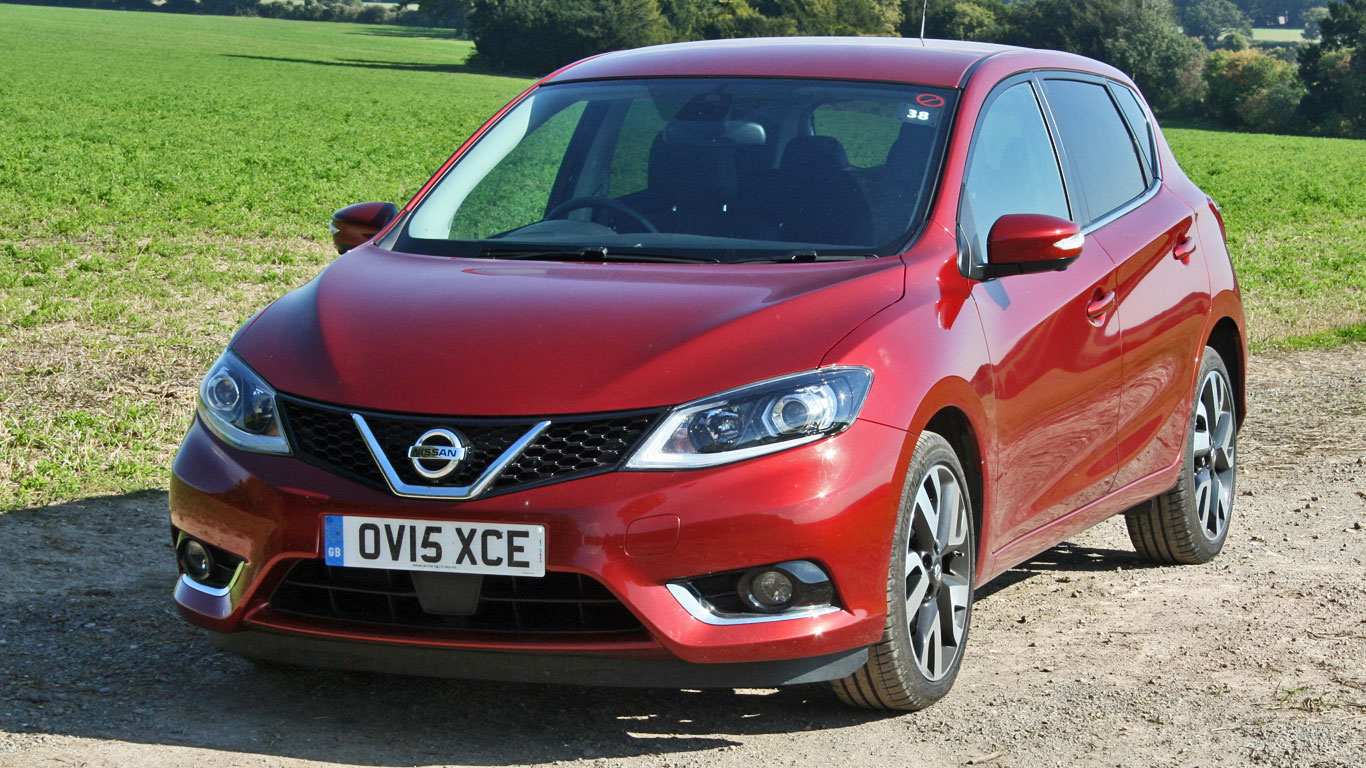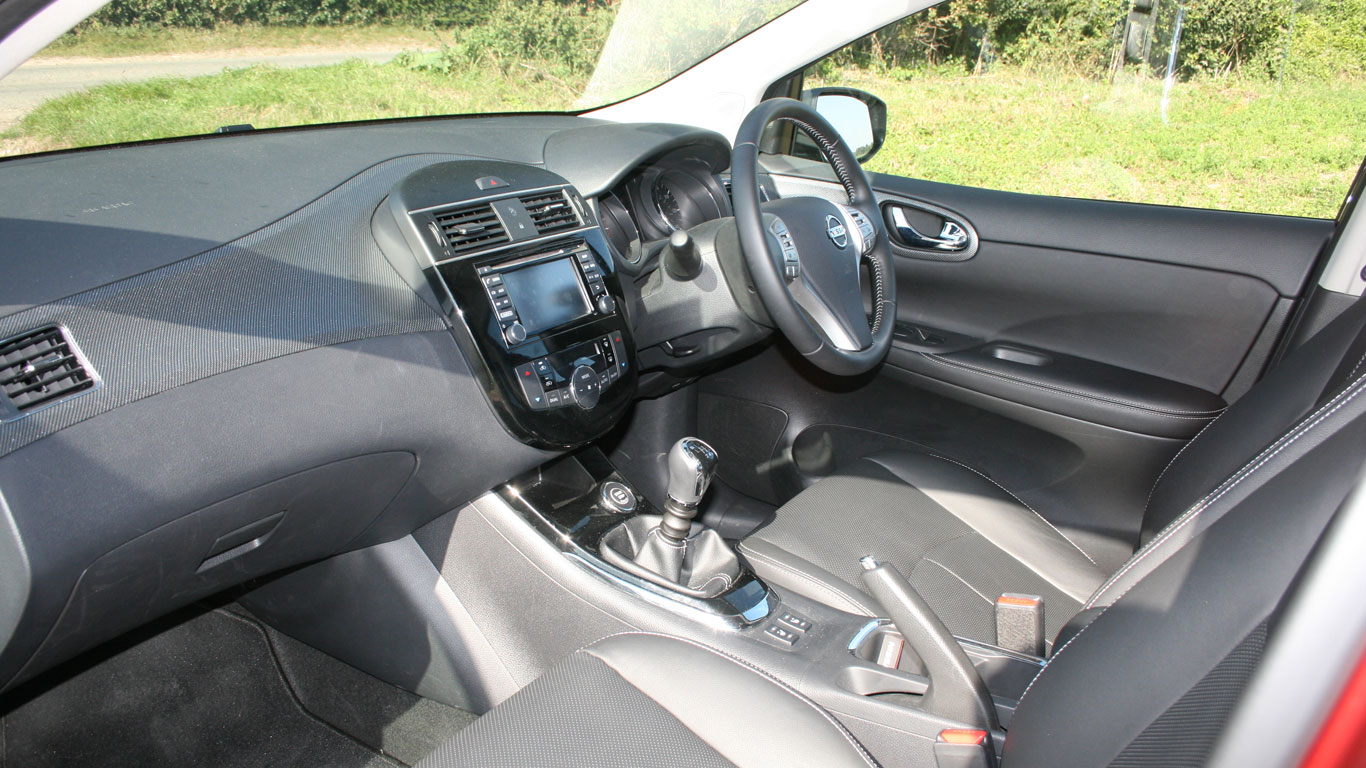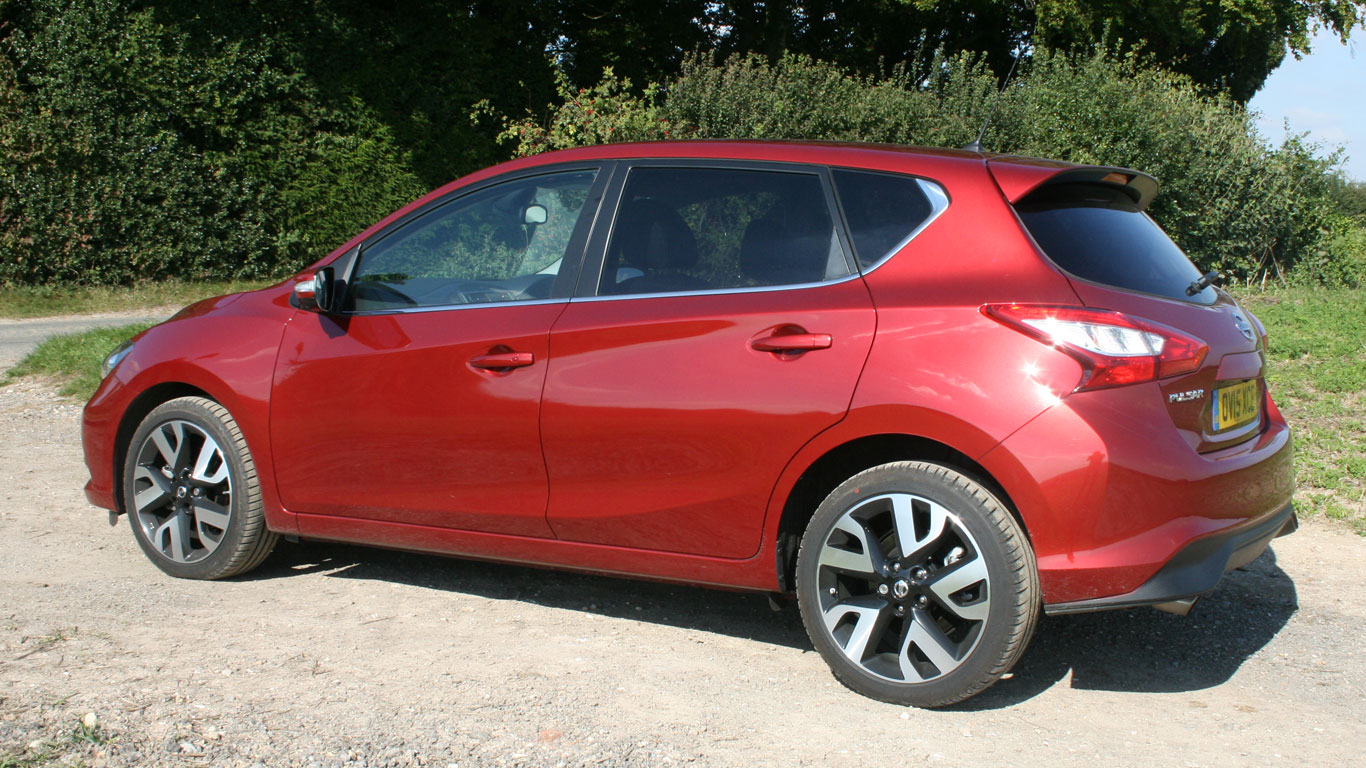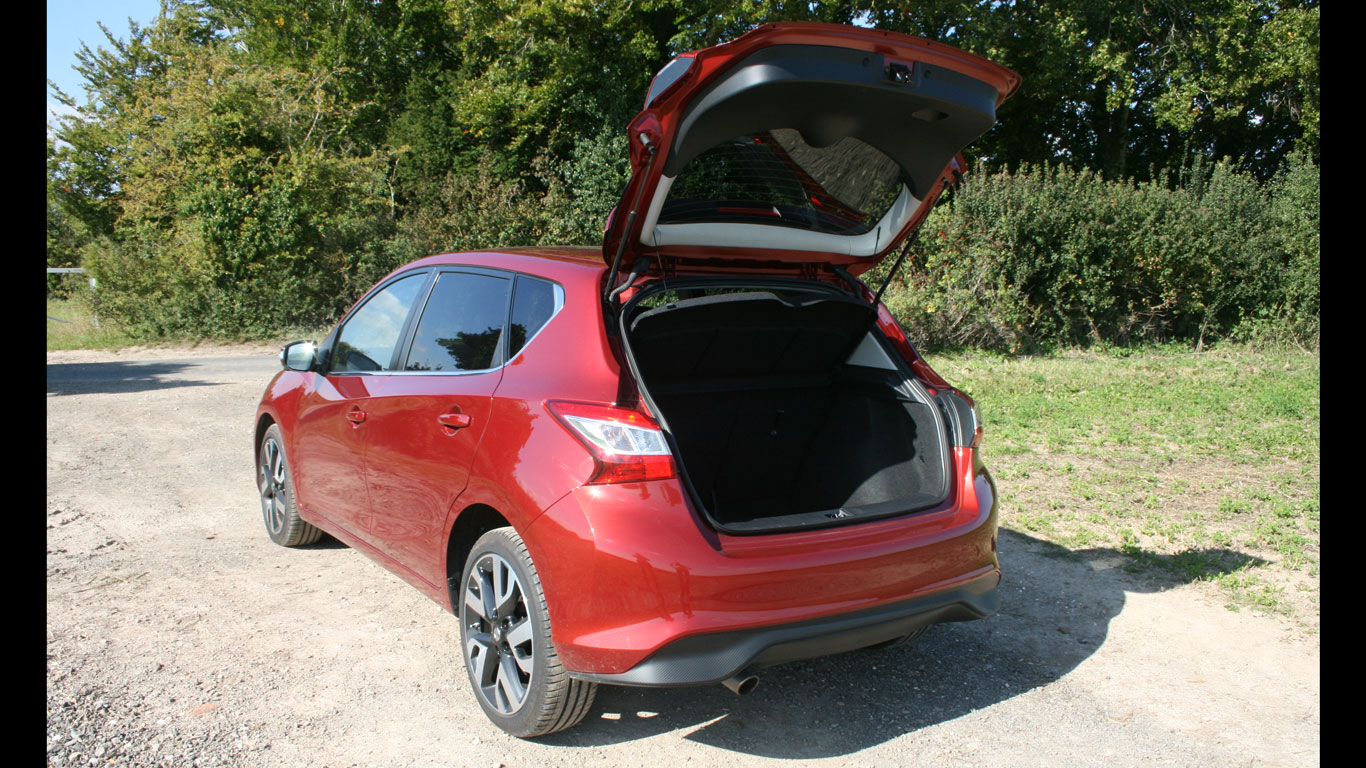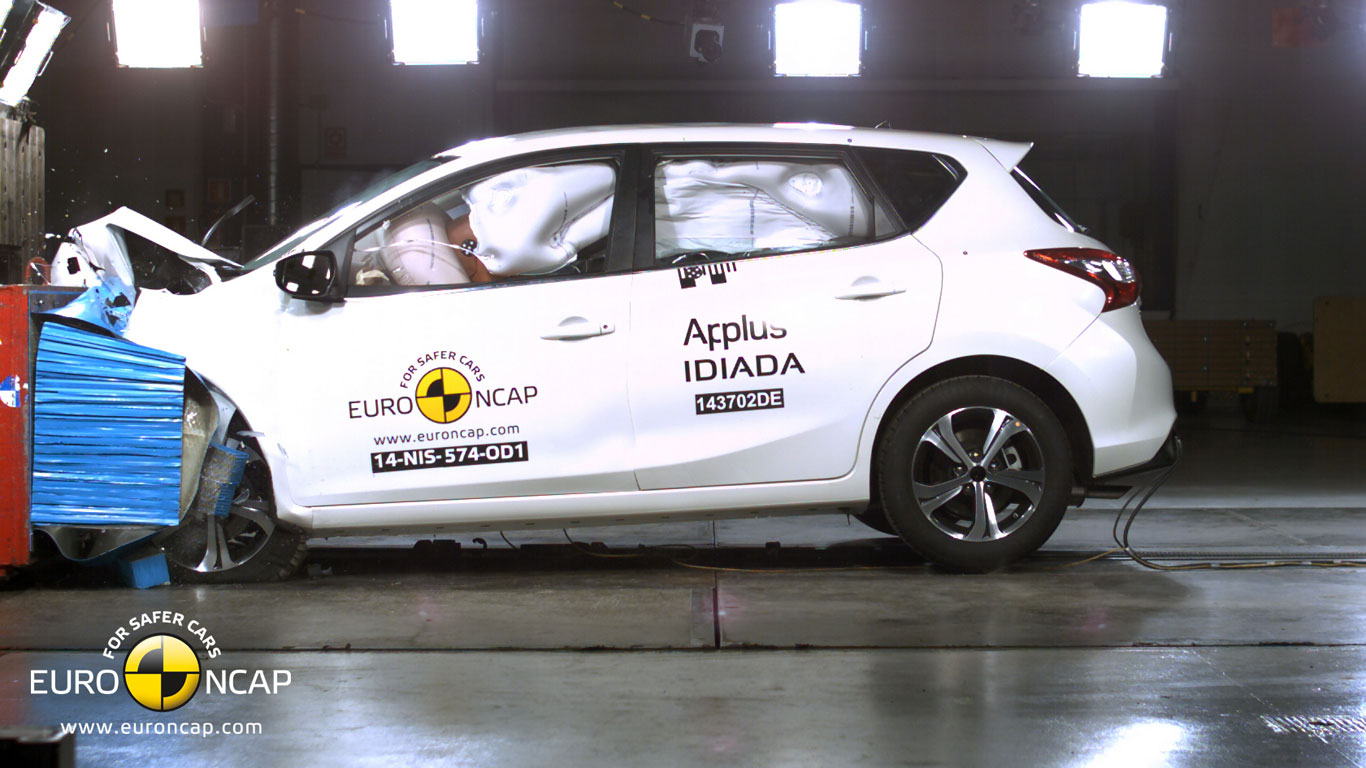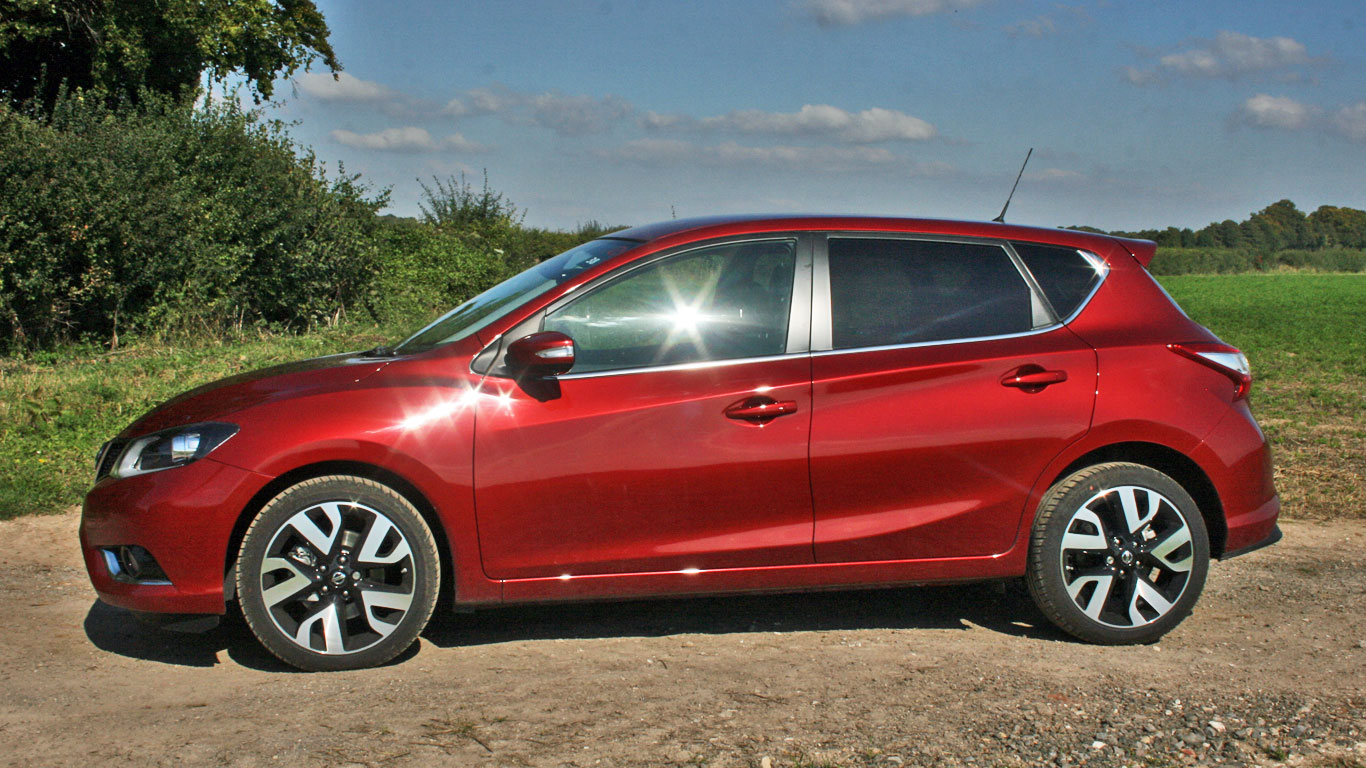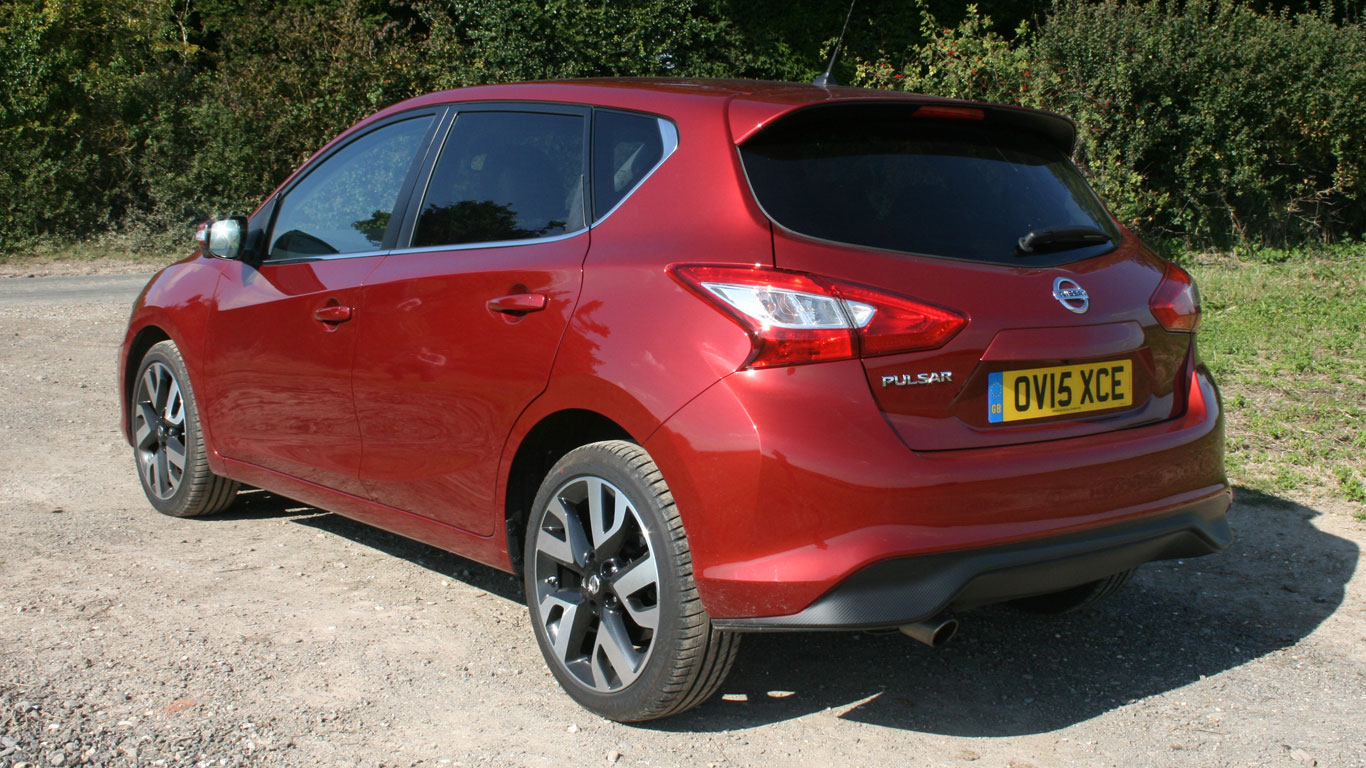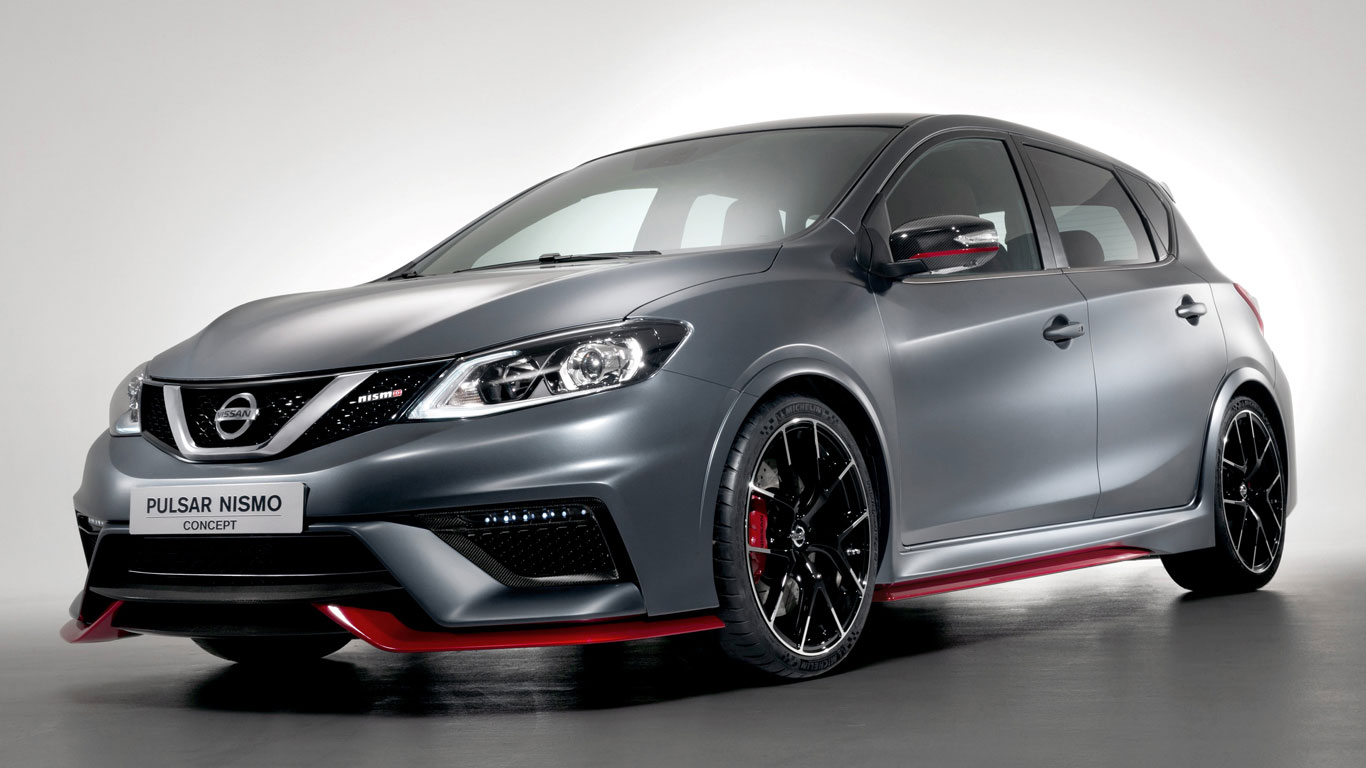A few years ago, Nissan controversially axed its Almera and Primera models and replaced them with these new, weird crossover things: the Juke and Qashqai. It was a very bold move, but one that certainly paid off.
Since 2006, Nissan hasn’t sold a regular C-segment hatchback. It’s relied solely on its customers jumping on the crossover bandwagon – until earlier this year, when it launched the Nissan Pulsar.
What are its rivals?
The Nissan Pulsar faces competition from the well-established Ford Focus and Vauxhall Astra. You’d have thought Nissan would re-enter the segment with something a little unusual, but the Pulsar feels like a step backwards towards the Almera. That’s a bad thing. A very bad thing.
Which engines does it use?
Most of the engine line-up is fairly run-of-the-mill – an entry-level 1.2-litre 115hp petrol, a sensible 1.5-litre 110hp diesel and a 1.6-litre 190hp range-topper petrol. The latter is the version we’re testing here – and this is where things start to get vaguely interesting.
Nissan doesn’t shout about the 190hp engine. It’s not marketed as being a sporty choice – but it’s not all that long ago that 190hp meant warm hatch status at the very least. Sure, it won’t compete with the Focus STs and Astra VXRs of today, but surely it’s enough to make the Pulsar ever-so-slightly less soulless?
What’s it like to drive?
The 190hp engine isn’t the torquiest of units, but likes to be revved, and it’s quite characterful as the revs rise. It’ll hit 62mph in 7.7 seconds – warm hatch territory. But, like with the exterior, there’s nothing sporty about the drive. Its handling is wallowy with little feedback through the wheel, while the ride feels like that of a luxury saloon.
Nissan could easily get away with giving the Pulsar a sportier suspension set-up, larger alloys and a few performance badges. But, so far, it hasn’t. We kinda like that.
Fuel economy and running costs
As you’d expect from such a sensible car, all versions are fairly efficient. The diesel returns an impressive 78.5mpg on the combined cycle, and emits just 94g/km CO2. That means road tax is free.
The, er, gas-guzzling 1.6-litre returns 49.6mpg, while the 1.2-litre petrol achieves 56.5mpg. In a car like this, there’s little reason to choose the diesel unless you’re doing mega miles.
Is it practical?
Yes – hugely so. Apparently it’s got the longest wheelbase in its class, and those stodgy looks make for lots of interior space. The rear legroom is astonishing – the only thing the Pulsar excels at, perhaps. Even the boot is bigger than that of a Vauxhall Astra or Ford Focus.
What about safety?
The Pulsar has a five-star Euro NCAP safety rating, and a myriad of technology to stop you bumping into things. Nissan’s Safety Shield, with features such as a 60-degree camera system, parking sensors, automatic city braking and lane-departure warning is standard on top-spec Tekna models.
Which version should I go for?
The Nissan Pulsar makes most sense as a budget runaround for those who want practicality, low running costs and Nissan’s reputation for reliability. As such, we’d be looking at a mid-spec 1.2-litre petrol for maximum affordability. The 1.6-litre is surprisingly fun, but not a real hot hatch, and you’d be mad to spend over £20,000 on a Pulsar.
Should I buy one?
It’s a bit depressing, seeing just how successful Nissan’s been with its quirky crossovers, and then it launches this. It’s a painfully average car in a competitive sector, and there’s little reason to buy one over something like the Ford Focus. But if you’re a loyal Nissan customer and don’t want to go down the faux-SUV route, the Pulsar will no doubt provide you with years of good service.
Pub fact
Nissan launched a hot Nismo version of its Pulsar at the 2014 Paris Motor Show. It was only a design study, but a production version could follow. It’s powered by the same 1.6-litre petrol engine as the 190hp DIG-T, but with power rumoured to be turned up to around 275hp.


